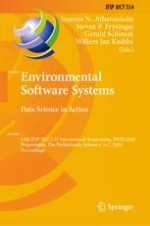2020 | Book
Environmental Software Systems. Data Science in Action
13th IFIP WG 5.11 International Symposium, ISESS 2020, Wageningen, The Netherlands, February 5–7, 2020, Proceedings
Editors: Ioannis N. Athanasiadis, Steven P. Frysinger, Gerald Schimak, Willem Jan Knibbe
Publisher: Springer International Publishing
Book Series : IFIP Advances in Information and Communication Technology
